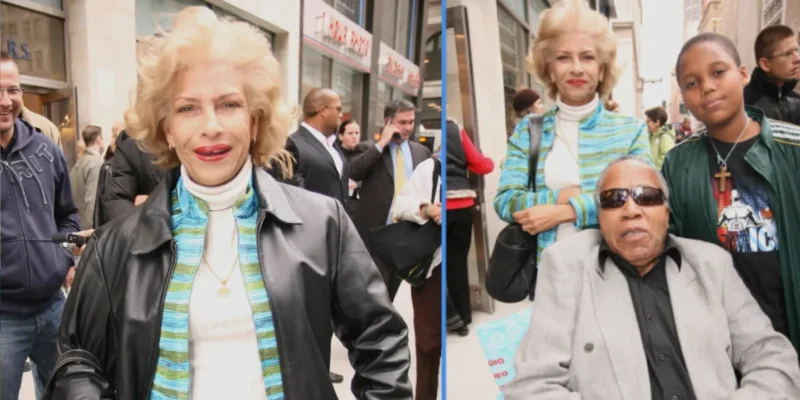
When you think about crime stories that captivated Hollywood, Frank Lucas’s empire usually steals the spotlight. But behind every kingpin? There’s often a partner who lived the highs, survived the lows, and paid their price. Meet Julie Farrait – the woman whose story goes way deeper than her brief appearance in “American Gangster.”
You’ve probably seen Lymari Nadal portray her on screen, but the real Julie Farrait’s journey reads like something straight out of a thriller novel. From Puerto Rican homecoming queen to federal prisoner, her life intertwines with one of Harlem’s most notorious drug operations in ways that’ll surprise you. Like many women connected to high-profile figures, including Andrea Skeete, Julie’s story reveals the complex reality behind public personas.
Early Life and Background
Julie Farrait’s story begins in Puerto Rico, where she grew up far from the criminal underworld that would later define her adult life. Born and raised on the island, she embodied the classic American dream of beauty and ambition. Her early years were marked by the kind of success that opens doors – she earned the title of homecoming queen, a recognition that spoke to both her stunning looks and social presence.
Growing up in Puerto Rico during the mid-20th century meant navigating limited opportunities for upward mobility, especially for young women. Traditional paths to success were narrow, and for someone with Julie’s beauty and charisma, the entertainment world or advantageous marriage often represented the most viable routes to a better life.
Her Puerto Rican heritage would later become significant in her relationship with Frank Lucas, as it connected her to communities and networks that proved valuable in their criminal enterprise. The transition from Puerto Rican homecoming queen to the mainland United States represents a pivotal moment in her life. Like many young people seeking better opportunities, she left behind the familiar comforts of home for the uncertain promise of American possibilities.
Meeting Frank Lucas
Julie Farrait didn’t start in the criminal underworld. Picture this: a stunning Puerto Rican homecoming queen who caught the eye of Frank Lucas during his rise to power in the late 1960s. Back then, Lucas was building what would become one of the most sophisticated drug networks in American history.
Their relationship wasn’t just romantic – it became a business partnership that would define both their lives. While Frank orchestrated the “Blue Magic” heroin operation that bypassed traditional mafia middlemen, Julie became his trusted confidante and active participant in the empire they built together.
The lifestyle? Pure luxury. We’re talking diamonds, designer clothes, and a Mercedes-Benz that turned heads on every Harlem street. Julie didn’t just enjoy the perks – she embraced them. She’s openly admitted her attraction to danger and the intoxicating pull of money’s power to transform lives overnight.
Criminal Royalty
During the peak years of Frank Lucas’s operation, Julie Farrait lived like royalty. The couple’s lavish lifestyle became legendary in Harlem circles. Think private jets, expensive jewelry, and the kind of influence that money can buy when you’re moving serious weight in the drug trade.
But here’s what the movies don’t always show you: Julie wasn’t just along for the ride. She played an active role in the operation, understanding the risks and choosing to stay involved anyway. This wasn’t some innocent bystander story – she knew exactly what world she was entering.
The danger attracted her. The luxury kept her. Her experience mirrors that of other women who found themselves entangled in high-stakes situations, much like Mallory Plotnik, who also navigated complex personal relationships under public scrutiny.
Frank and Julie’s partnership extended beyond romance into business operations. She understood the drug trade’s intricacies and helped manage various aspects of their empire. The couple’s wealth allowed them to live extravagantly, purchasing expensive cars, jewelry, and clothing that made them stand out even in affluent circles.
The Downfall
Every empire falls, and the Lucas organization was no exception. When federal authorities finally closed in during the 1970s, Julie Farrait found herself facing serious federal charges. Her involvement in the drug enterprise landed her a five-year prison sentence, the time she served while Frank was also behind bars.
The arrest came after years of federal investigation. Law enforcement had been building cases against the Lucas organization, gathering evidence through surveillance, informants, and financial records. When the hammer fell, it fell hard on everyone involved, including Julie.
Prison changed her perspective, but it didn’t end her story. After her release, Julie and Frank spent years living apart, their relationship strained by the aftermath of their criminal lives. The glamorous couple who once ruled Harlem’s streets was now dealing with the long-term consequences of their choices.
The separation wasn’t just physical – it was emotional and psychological. Both had to rebuild their lives after losing everything they’d worked to create. The luxury lifestyle was gone, replaced by the harsh reality of starting over with criminal records and damaged reputations.
Reunion and Hollywood Fame
Love stories in the criminal world rarely get fairy tale endings, but Julie and Frank’s relationship took an unexpected turn in 2006. After years of separation, they reunited – a decision that showed their bond went deeper than just a business partnership.
When Hollywood came calling to tell Frank’s story in “American Gangster,” Julie’s character became part of cinema history. Lymari Nadal’s portrayal brought her story to millions of viewers, though like most Hollywood adaptations, it only scratched the surface of her real experiences.
The film showed glimpses of her luxury lifestyle and loyalty to Frank, but it couldn’t capture the full complexity of a woman who chose danger over safety, wealth over security, and love over freedom. Hollywood simplified her story, focusing on the glamorous aspects while glossing over the psychological complexity that drove her choices.
The movie’s success brought renewed attention to their story, but it also created a mythologized version of events that didn’t always match reality. Julie found herself portrayed as a character rather than a real person with complex motivations and consequences.
Recent Legal Troubles
Julie Farrait’s story didn’t end with Hollywood fame or peaceful retirement. In 2025, she made headlines again – this time for all the wrong reasons. Authorities arrested her in Puerto Rico for attempting to sell 2 kilograms of cocaine at a hotel, charging her with conspiracy to violate narcotics laws.
This wasn’t some spur-of-the-moment decision. The DEA investigation that led to her arrest began in 2009, involving recorded conversations and carefully planned sting operations. At an age when most people are thinking about retirement, Julie found herself facing another five-year prison sentence.
The arrest revealed something important about her character: decades after her first imprisonment, she was still willing to take risks that most people would never consider. Whether you call it addiction to danger or simply poor judgment, it shows that some people never really leave the criminal world behind.
This latest legal trouble demonstrates how difficult breaking free from criminal patterns can be. Even after serving time, experiencing consequences, and having years to reflect, she found herself back in similar circumstances.
The Real Woman
What drives someone like Julie Farrait? Her story reveals a complex personality drawn to excitement, luxury, and danger itself. She’s admitted her attraction to the lifestyle that money could provide, but also to the adrenaline rush that comes with living outside the law.
You can’t understand her choices without recognizing the environment she entered. Harlem in the late 1960s and early 1970s was a place where traditional paths to wealth were limited, but alternative routes could lead to unimaginable riches. For a young Puerto Rican woman, partnering with someone like Frank Lucas offered opportunities that simply didn’t exist elsewhere.
Her loyalty to Frank through decades of legal troubles, prison time, and separation speaks to a deep emotional connection that transcended their business relationship. When they reunited in 2006, it wasn’t about money or status – those days were long gone.
The Privacy Choice
Julie Farrait’s life story serves as a real-world case study in how criminal choices ripple through decades. Her initial involvement with Frank Lucas led to imprisonment, separation from family, ongoing legal scrutiny, and ultimately, more criminal charges in her later years.
The woman who once wore diamonds and drove luxury cars has spent significant portions of her adult life in federal prison. The lifestyle that attracted her came with a price tag that she’s still paying today.
Her 2025 arrest demonstrates how difficult it can be to completely break free from criminal patterns once they’re established. Even after serving time, experiencing the consequences, and having years to reflect, she found herself back in legal trouble.
Cultural Impact and Public Fascination
Why do people remain fascinated by Julie Farrait’s story? Part of it stems from the “American Gangster” connection, but there’s something deeper at work. Her story represents the complex relationship between love, loyalty, and crime that captures the public imagination.
She wasn’t just a criminal – she was a partner, a co-conspirator, and ultimately, someone who paid her price for the choices she made. In a world where women in crime stories are often portrayed as either victims or accessories, Julie’s active participation makes her story more compelling.
Her recent legal troubles keep her name in the news, reminding people that real criminal stories don’t end when the movie credits roll. Life continues, choices have consequences, and some people never fully escape their past.
Conclusion
Julie Farrait’s story isn’t a cautionary tale or a redemption story – it’s simply human. Complex, flawed, and ongoing, just like the woman who lived it. From homecoming queen to federal prisoner, from Hollywood character to real-life headlines, her journey spans decades of choices that continue to define her legacy.
Her life reminds us that behind every crime story are real people making real decisions with lasting consequences. The woman who once lived like royalty in Harlem’s criminal underworld now faces the reality that some paths, once chosen, become almost impossible to abandon. Like other women who’ve found themselves in extraordinary circumstances, including Janet Smollett, Julie Farrait’s story continues – not with the neat ending movies prefer, but with the messy, ongoing complexity that defines real human experience.









